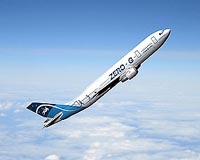 |
Sunnyvale CA (SPX) Oct 02, 2009 NASA's Lunar Crater Observation and Sensing Satellite mission (LCROSS) based on new analysis of available lunar data, has shifted the target crater from Cabeus A to Cabeus (proper). The decision was based on continued evaluation of all available data and consultation/input from members of the LCROSS Science Team and the scientific community, including impact experts, ground and space based observers, and observations from Lunar Reconnaissance Orbiter (LRO), Lunar Prospector (LP), Chandrayaan-1 and JAXA's Kaguya spacecraft. This decision was prompted by the current best understanding of hydrogen concentrations in the Cabeus region, including cross-correlation between the latest LRO results and LP data sets. The general consensus of lunar experts led by the LCROSS science team is that Cabeus shows, with the greatest level of certainty, the highest hydrogen concentrations at the south pole. Further consideration of the most current terrain models provided by JAXA's Kaguya spacecraft and the LRO Lunar Orbiter Laser Altimeter (LOLA) was important in the decision process. The models show a small valley in an otherwise tall Cabeus perimeter ridge, which will allow for sunlight to illuminate the ejecta cloud on Oct. 9, and much sooner than previously estimated for Cabeus. While the ejecta does have to fly to higher elevations to be observed by Earth assets, a shadow cast by a large hill along the Cabeus ridge, provides an excellent, high-contrast, back drop for ejecta and vapor measurements. The LCROSS team concluded that Cabeus provided the best chance for meeting its mission goals. The team critically assessed and successfully advocated for the change with the Lunar Precursor Robotic Program (LPRP) office. The change in impact crater was factored into LCROSS' most recent Trajectory Correction Maneuver, TCM7. During the last days of the mission, the LCROSS team will continue to refine the exact point of impact within Cabeus crater to avoid rough spots, and to maximize solar illumination of the debris plume and Earth observations. Share This Article With Planet Earth
Related Links Ames Research Center Mars News and Information at MarsDaily.com Lunar Dreams and more
 Key Process For Space Outpost Proved On 'Vomit Comet' Ride
Key Process For Space Outpost Proved On 'Vomit Comet' RideCleveland OH (SPX) Sep 29, 2009 Flying high over the Gulf of Mexico, researchers from NASA and Case Western Reserve University found a key to unlocking oxygen from the surface of the moon. The celestial body has no atmosphere like Earth's, holding the precious element just a breath away. But, oxygen to breathe, grow food, create water and burn rocket fuel - to make a space outpost a reality - is trapped in its soils. ... read more |
|
| The content herein, unless otherwise known to be public domain, are Copyright 1995-2009 - SpaceDaily. AFP and UPI Wire Stories are copyright Agence France-Presse and United Press International. ESA Portal Reports are copyright European Space Agency. All NASA sourced material is public domain. Additional copyrights may apply in whole or part to other bona fide parties. Advertising does not imply endorsement,agreement or approval of any opinions, statements or information provided by SpaceDaily on any Web page published or hosted by SpaceDaily. Privacy Statement |